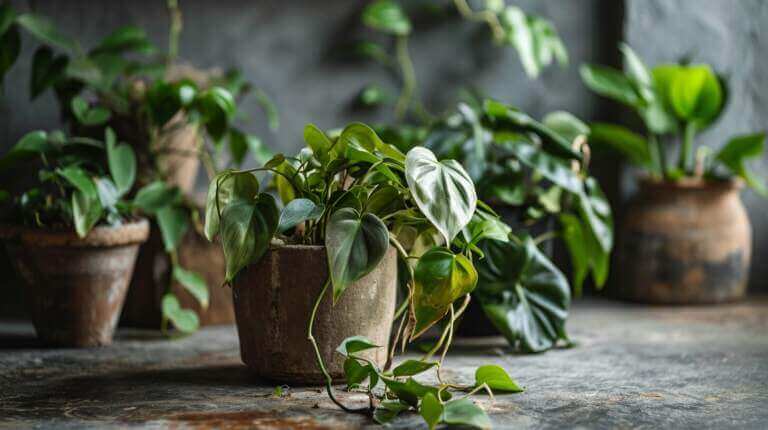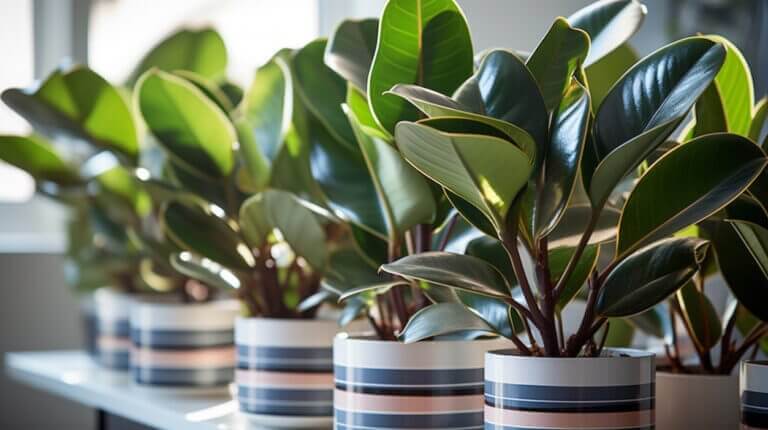Discover African Violet Varieties: Flowers Bloom, Foliage, and Trailing Characteristics
African violets are well-loved for their vibrant blooms and make a popular houseplant choice. They come in a wide range of cultivar varieties, each with its unique characteristics. African violets can produce vibrant flowers all year long, making them a perfect choice for adding color to your home. They come in diverse colors, from purple to pink and even blue. African violets are low-light friendly and prefer indirect sunlight. Let’s dive into exploring the different popular African violet varieties and learn more about their unique features and care tips.
Key Takeaways:
- There are numerous varieties of African violets, each with its unique characteristics.
- African violets can add vibrant colors to your home and produce flowers all year round.
- They prefer low-light conditions and indirect sunlight.
- African violets come in diverse colors, from purple to pink and even blue.
- Proper care and maintenance are essential for the health and blooming of African violets.
African Violet Plant History
The history of African violets dates back to the late 19th century. These beautiful plants were first discovered in Tanzania in 1892 by a German colonial official. The seeds were then sent to Germany, where the plant was named and shared with other plant enthusiasts. It wasn’t long before African violets made their way to the United States in 1894, capturing the hearts of plant lovers across the country.
The popularity of African violets grew even more with the development of fluorescent bulbs, which provided the ideal light conditions for these plants to thrive indoors. Today, there is an entire organization dedicated to the cultivation and appreciation of African violets—the African Violet Society of America. This society brings together enthusiasts who share their knowledge, tips, and love for these charming plants.
Table: African Violet History Timeline
| Year | Event |
|---|---|
| 1892 | African violets discovered in Tanzania |
| 1894 | African violets arrive in the United States |
| 20th century | Popularity grows with the availability of fluorescent bulbs |
| Present | African Violet Society of America established |
Through the years, African violets have become treasured houseplants, adorning countless homes with their vibrant blooms. Their fascinating history only adds to the allure and appreciation for these delightful plants.
African Violet Varieties and Characteristics
There is a wide variety of African violets to choose from, each with its own unique characteristics. Two common types of African violets are rosette and trailing varieties. Rosette African violets have leaves that grow in a circular pattern from a central stalk, creating a compact and symmetrical appearance. They produce beautiful blooms in a range of colors, from vibrant purples to soft pinks.
On the other hand, trailing African violets have multiple stems that grow sideways, creating a cascading growth habit. They are perfect for hanging baskets or as trailing plants in pots. Trailing African violets also come in a variety of colors and can add a touch of elegance to any room.
In terms of blooms, African violets can have single or double flowers. Some varieties even have frilled or star-shaped petals, adding a unique touch to their appearance. The foliage of African violets is known for its fuzzy texture, which adds to their charm. The leaves are strong and form a robust leaf system that supports the plant’s growth and health.
To help you visualize the different African violet varieties, here is a table summarizing some of the popular African violet varieties and their characteristics:
| Variety | Characteristics |
|---|---|
| Rosette African Violets | Leaves grow in a circular pattern from a central stalk. Produces beautiful blooms in various colors. |
| Trailing African Violets | Multiple stems grow sideways, creating a cascading growth habit. Comes in a variety of colors. |
| Double Blooms | Flowers with multiple layers of petals, creating a fuller appearance. |
| Single Flowers | Flowers with a single layer of petals, showcasing simplicity and elegance. |
As you can see, there is a wide range of African violet varieties to choose from, each with its own unique characteristics. Whether you prefer the compact and symmetrical look of rosette varieties or the trailing beauty of trailing varieties, there is an African violet that will capture your heart.
African Violet Care Guide
Growing African violets can be a rewarding and enjoyable experience. With the right care, these beautiful flowers can thrive indoors and bring a pop of color to any space. Here are some essential tips for caring for your African violets:
1. Choosing the Right Pot
When selecting a pot for your African violets, opt for one that is the appropriate size to accommodate root growth. It’s best to choose a pot with drainage holes to prevent waterlogged soil, which can lead to root rot. Additionally, using a porous potting mix specifically designed for African violets will help ensure good drainage.
2. Providing the Ideal Growing Conditions
African violets thrive in bright, indirect sunlight. Placing your plants near a north or east-facing window is usually ideal. Avoid exposing them to direct sunlight, as this can scorch the leaves. Maintaining a moderate room temperature between 65°F and 75°F (18°C – 24°C) is recommended, as extreme temperatures can hinder growth.
3. Watering and Fertilizing
African violets prefer to be watered from the bottom to prevent the leaves from getting wet. Fill a saucer with water and place the pot in it, allowing the plant to soak up the water through the drainage holes. Be sure to empty any excess water from the saucer after about an hour to avoid waterlogging. Fertilize your African violets regularly with a balanced, water-soluble fertilizer specifically formulated for these plants.
Table:
| Care Tips | Frequency |
|---|---|
| Watering | About once a week or when the top inch of soil feels dry |
| Fertilizing | Every 2-4 weeks during the growing season |
| Pruning | As needed to maintain shape and remove dead leaves or flowers |
| Repotting | Every 1-2 years or when the plant has outgrown its current pot |
“African violets prefer to be watered from the bottom to prevent the leaves from getting wet.”
African violets are relatively low-maintenance plants, but they do require regular care to thrive. By following these tips, you can enjoy the beauty of these delicate flowers and create a welcoming indoor garden.
Encouraging African Violet Flower Blooms
African violets are beloved for their year-round blooms, but there are steps you can take to encourage even more vibrant and frequent blooming. One technique is deadheading, which involves removing wilted blooms from the plant. By doing so, you redirect the plant’s energy towards the production of new flowers, resulting in a continuous display of beautiful blooms.
Another method to promote blooming is pinching off stressed or damaged parts of the plant. This helps free up more energy that can be redirected towards blooming. By removing any unhealthy or struggling sections, you allow the plant to focus its resources on producing new flowers.
Of course, providing the right care and environment is crucial for African violets to thrive and bloom. Make sure to provide bright indirect sunlight, as these plants prefer low-light conditions. Avoid placing them in direct sunlight, as this can cause leaf burn. Proper watering is also important. African violets should be watered when the top inch of soil feels dry to the touch. Water from the bottom to prevent water from touching the leaves, as African violets are sensitive to wet foliage.
By following these tips and providing the ideal conditions, you can enjoy an abundance of beautiful blooms from your African violets. Remember to deadhead regularly, pinch off stressed areas, and create a suitable environment for these stunning plants to thrive.
Table: Comparison of Deadheading and Pinching
| Technique | Benefits |
|---|---|
| Deadheading | – Redirects energy towards new flower production – Maintains a neat and tidy appearance – Promotes continuous blooming |
| Pinching | – Frees up energy for blooming – Removes stressed or damaged parts – Encourages overall plant health |
Propagating African Violets
Propagating African violets is an exciting way to expand your collection and share these beautiful plants with others. There are several methods you can use to propagate African violets, including leaf cuttings, division, and seed propagation.
One popular method is propagating African violets through leaf cuttings. Simply select a healthy leaf from a mature plant and carefully remove it, making sure to include the petiole. Place the leaf in a suitable growing medium, such as a mix of perlite and peat moss, and keep it moist. Over time, new roots will develop from the base of the leaf, and a new plantlet will begin to grow.
Another method is division, which involves separating baby crowns from the main crown of a mature African violet. When the plant develops multiple crowns, gently remove the baby crown, making sure it has some roots attached. Plant the baby crown in its own pot with well-draining soil, and provide it with the same care as a mature African violet.
Lastly, you can propagate African violets from seed. This method requires patience, as it can take several weeks for the seeds to germinate. Sow the seeds in a mixture of peat moss and perlite, keeping them consistently moist and in a warm environment. Once the seedlings have developed, transplant them into individual pots and continue to care for them as they grow.
Table: Comparison of African Violet Propagation Methods
| Propagation Method | Advantages |
|---|---|
| Leaf Cuttings | – Relatively easy and straightforward – Can produce multiple new plants from a single leaf – Quick results compared to other methods |
| Division | – Allows for the separation of mature plants with multiple crowns – Ensures each new plant has an established root system – Can immediately be potted individually |
| Seed Propagation | – Offers the opportunity to grow new varieties of African violets – Allows for a larger number of new plants to be produced – Can be a rewarding and fascinating process |
Tips for Growing and Caring for Violet Plants
When it comes to growing African violets, proper care is essential for their health and vitality. Here are some tips to help you successfully care for your violet plants:
Sunlight requirements: African violets prefer bright indirect sunlight. Place them in a location with plenty of natural light, but avoid direct sunlight, as it can scorch their delicate leaves.
Watering: It’s important to water your African violets correctly. Keep the soil lightly moist, but avoid over-watering, as this can lead to root rot. A good rule of thumb is to water when the top inch of soil feels dry to the touch.
Humidity: African violets thrive in a humid environment. To increase humidity around your plants, you can place a tray of water near them or use a humidifier. This will help prevent their leaves from drying out and promote healthy growth.
Fertilizing: Regular fertilization is necessary to provide your violet plants with the nutrients they need. Use a balanced fertilizer specially formulated for African violets and follow the instructions on the package. Over-fertilizing can be harmful, so it’s important to stick to the recommended dosage.
Trimming: Trimming your African violets is essential for maintaining their shape and promoting bushier growth. Remove any yellow or wilted leaves, as well as spent flowers, to redirect energy towards new growth and blooming.
Pests and diseases: Keep a close eye on your violet plants for any signs of pests, such as aphids or spider mites. If you notice any pests, treat them promptly using organic insecticidal soap or neem oil. Also, be mindful of common diseases that can affect African violets, such as powdery mildew or root rot. Proper care, including good air circulation and well-draining soil, can help prevent these issues.
By following these tips for growing and caring for your African violets, you can ensure that they thrive and reward you with their beautiful blooms. With the right sunlight, watering, humidity, fertilizing, trimming, and pest prevention, your violet plants will flourish and bring joy to your home.
FAQ
Are African violets easy to care for?
Yes, African violets are relatively easy to care for with the right knowledge. They prefer bright indirect sunlight, well-draining soil, and regular fertilization. Proper watering and maintenance, such as trimming and monitoring for pests, are also important.
How do I encourage more blooms on African violets?
To encourage more blooms on African violets, deadhead wilted blooms to redirect energy to new flower production. Pinching off stressed or damaged parts of the plant can also free up more energy for blooming.
What are the different methods of propagating African violets?
African violets can be propagated through various methods. This includes separating baby crowns from mature plants, taking leaf cuttings to grow new plants, and germinating seeds to start new African violet plants.
How do I care for African violets?
African violets require bright indirect sunlight, well-draining soil, and regular watering to keep the soil lightly moist but not waterlogged. Maintaining proper humidity levels, fertilizing regularly, trimming the plants, and monitoring for pests and diseases are also important aspects of care.






